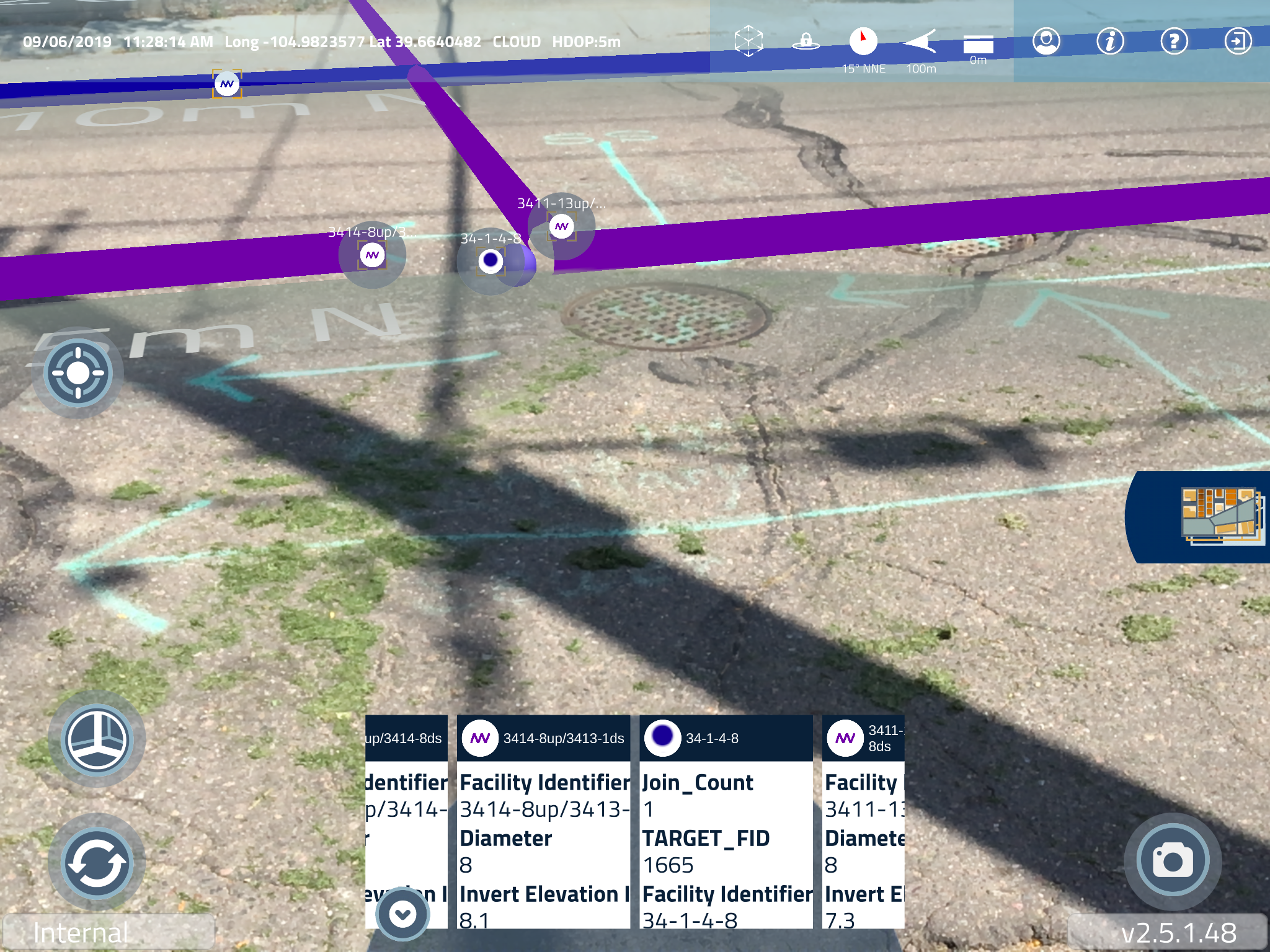The City of Englewood, CO Reduces Downtime with AR
Augmented reality improves City of Englewood, Colorado utilities department’s ROI.
GIS analyst for the utilities department of the City of Englewood, Colorado, Myles McReynolds, was looking for a tool that would help his distribution and collection teams report discrepancies in Englewood’s GIS record, improving GIS data while relieving downtime for those teams. During his search, McReynolds found those needs addressed by the Argis Lens, a mobile app that uses augmented reality (AR) technology to bring a visual representation of ArcGIS data to the work site. The Argis Lens quickly provides situational awareness for tasks when certified location isn’t necessary.
AR Pilot Program for Utilities Department Distribution and Collection Managers
In a pilot program this summer, the City of Englewood introduced the Argis Lens to its distribution and collection managers. All members of the distribution and collection teams are certified for location, but only one crew member marks calls for CO811 transactions. On average, there are about 20 to 30 locates each month.
Since beginning the Argis Lens pilot program, the City of Englewood is finding numerous advantages resulting from introducing the Argis Lens to their teams’ workflow. The distribution and collection teams found the Lens very useful in situations where crews need to see underground features swiftly-- for example, looking for sewer and water taps or locating curb stops. The need for locates decreased with Lens usage, saving time and money. The Lens’ ability to photo capture the worksite has also allowed for more precise visual documentation-- information that can be shared in an instant. Additionally, those in the pilot program appreciated that using the Lens required no special training. They found it easy to use and even a little bit fun.
Cost-Savings and a Better GIS Record with AR
What does implementation of the Argis Lens look like for Englewood’s distribution and collection crews? McReynolds created a field correction workflow that outlines their best practices for implementing the Lens. First, crews make map correction part of their everyday routine. It adds about 10 minutes to the daily workload, but this step pays off in more accurate data over time, which is valuable in terms of data reliability and future time savings. Next, crew members collect and document new data with a GNSS device when new assets go in or old assets are repaired. Finally, they take photos and videos and link them to important assets in the attribute table as a link.
The benefit of this data improvement cycle? Concise GIS data that has been refined into a more dependable resource. Englewood’s vision and commitment to data improvement has given them better answers to common GIS questions, limiting exposure to inaccuracies and human error. Affirming the value of augmented reality paired with GIS data, McReynolds said, “Fixing GIS discrepancies is 80% of what I do. Recording and reporting discrepancies in AR allows for fast sharing of information.” Harnessing the geospatially communicative power of augmented reality, the City of Englewood is well prepared for its future.


